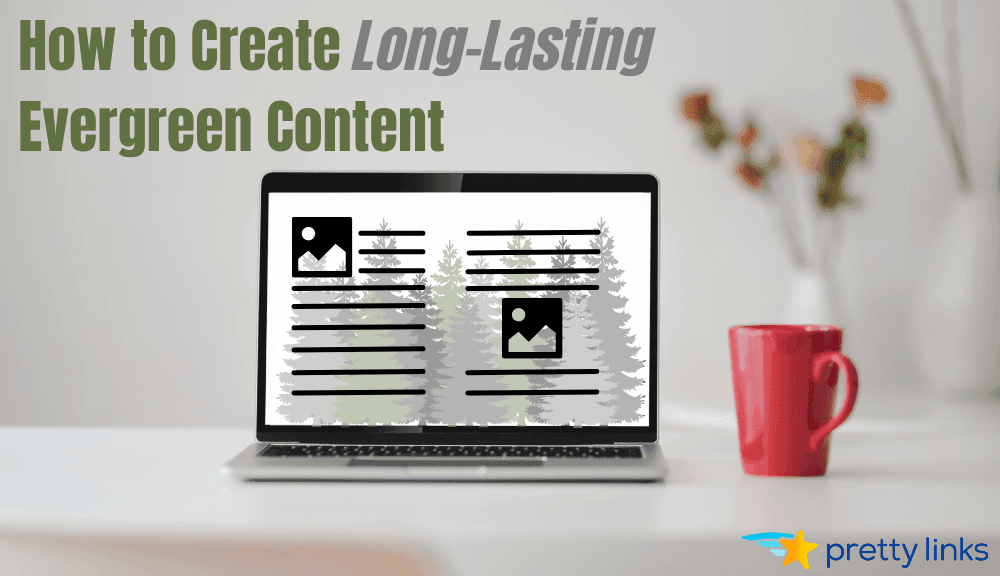How to Create Evergreen Content that Lasts (4 Tips)

Contents
Keeping up with new trends is an essential part of running a blog. However, that's not the only aspect you may need to consider. Creating evergreen content that can remain relevant for a long time is also a necessary skill.
Fortunately, it may be easier to produce evergreen content than you think. By understanding a few key tips about making long-lasting articles, you can start writing your own in no time.
In this article, we'll cover a few benefits of creating evergreen posts. Then, we'll walk you through four tips to help you get started with this type of content. Let's dive right in!
Why Should You Consider Creating Evergreen Content?
Evergreen content is relevant for an extended period. The term can apply to any number of topics. As long as a post is equally suitable for readers on day 100 as day one, you can consider it evergreen.
There are multiple reasons why you might want to write evergreen content. For one thing, it can take some pressure off of your production schedule. After all, you don't necessarily have to publish new work if the older pieces still apply.
Long-lasting pieces can also help you work more efficiently. Since these posts rely less on specific points in time, you're free to work ahead. Additionally, you have a backup vault of content if you ever fall behind.
Finally, evergreen content can also help you appeal to new users. Readers won't need to follow the latest trends to enjoy your site. Instead, they can rely on timeless content to get them up to speed.
4 Tips on How to Create Evergreen Content that Lasts
Overall, evergreen content can help your website run smoother and appeal to more visitors. Fortunately, writing it can also be easy! Here are four tips to help you get started.
1. Carefully Conduct Your Research
Thorough background research is essential for most types of content. However, it's especially crucial for evergreen work. This is because having an accurate grasp of the topic's origins can lower the odds that your article will stop being relevant.
However, research doesn't just apply to the past. You may also want to make predictions about future events in your niche. These future developments can date your work if you're not careful. Therefore, reading up on the topic might help improve your accuracy and the article's shelf life.
Nevertheless, even the most detailed research won't help if the facts change after you've already published. As such, you may want to consider updating your evergreen articles from time to time:

This approach can save you a lot of time. Instead of writing a whole new piece every time further information comes out, you can simply edit an otherwise accurate article. As such, these edits can help show your readers that you're staying up-to-date with developments in your niche.
2. Switch Up Your Format
There are already a few good reasons to switch up your blog content's format. For example, utilizing varied mediums can provide more ways for visitors to enjoy your work. Moreover, using different content formats can support the creation of evergreen posts.
News-based articles don't lend themselves to evergreen content because their information has a short lifespan. However, other approaches are ideal for evergreen posts, such as:
- Tutorials for using widely-known tools
- Glossaries of popular terms within your niche
- Case studies on how certain events played out
These formats rely less on in-the-moment events and more on established concepts. As such, using different mediums is both a way to vary your blog content and produce more long-lasting work.
We also recommend leaning toward longer-form reference articles. One reason is, these posts are less likely to change as time goes on. Additionally, creating reference content can help newcomers get familiar with your site and boost its value.
Finally, don't be afraid to think outside the box with formatting. For example, consider creating an introductory article on your homepage welcoming people to your site. In addition to being evergreen-friendly, this post can also help you build a solid brand identity.
3. Reach Out to Your Users
User interactions are some of the best ways to build up your blog. Not only can they take some pressure off of your workload, but interaction is an effective way to show that you appreciate your visitors.
Moreover, these interactions can also work toward an evergreen goal. Interacting with your audience can generate content for your blog that lasts a long time. That way, you get immediate and long-term benefits from your work.
You can consider the makeup store, Ulta, as an example. It ran a question and answer session with its fans, providing helpful tips along the way:

Because the business focused on advice, this interactive session can become a timeless piece of content. Users may have asked their questions at specific moments. Still, the answers will remain relevant to other readers for a longer period.
4. Provide Wide-Ranging Advice
Providing advice can be a smart strategy for any blog. It offers concrete value and answers user questions. If you expand the scope of your advice, it can also serve as evergreen content.
Guidance also relies on more than one point of data. Niche advice needs to get pretty specific to be helpful to readers.
Broader information, by contrast, doesn't need to account for all possible variations. As such, it tends to be more forgiving of any changes that occur due to time passing. That means even a little less focus can help your work stay relevant for longer.
For example, you can consider this article about raising puppies:

This post doesn't zero in on one area, such as grooming or feeding. Instead, it gives a more general overview of several different topics. These subjects require fewer details, and as such, are less likely to need updating.
Nevertheless, try not to write very vague posts. Otherwise, you risk creating content that's long-lasting but not particularly helpful. Striking this balance can be challenging, but it's also a key step in helping you become a top blog to follow.
Conclusion
Trendy posts definitely have their merits. However, they're not the only types of content you should consider creating. By including evergreen work in your blog, you can help extend your website's relevance into the future.
In this article, we walked you through four tips to create evergreen content that lasts:
- Conduct high-quality research before you write.
- Don't be afraid to switch up your formatting.
- Interact with your users.
- Provide wide-ranging advice.
Do you have any questions about creating evergreen content? Let us know in the comments section below!
If you liked this article, be sure to follow us on Facebook, Twitter, Pinterest, and LinkedIn! And don't forget to subscribe to our newsletter!